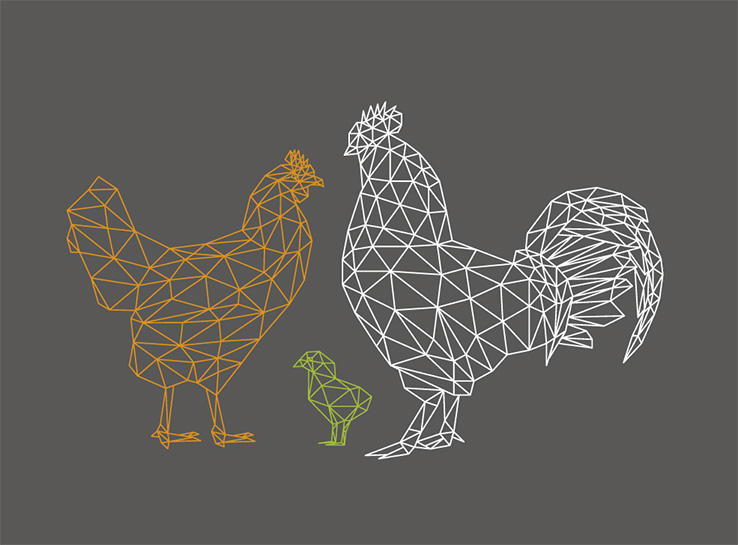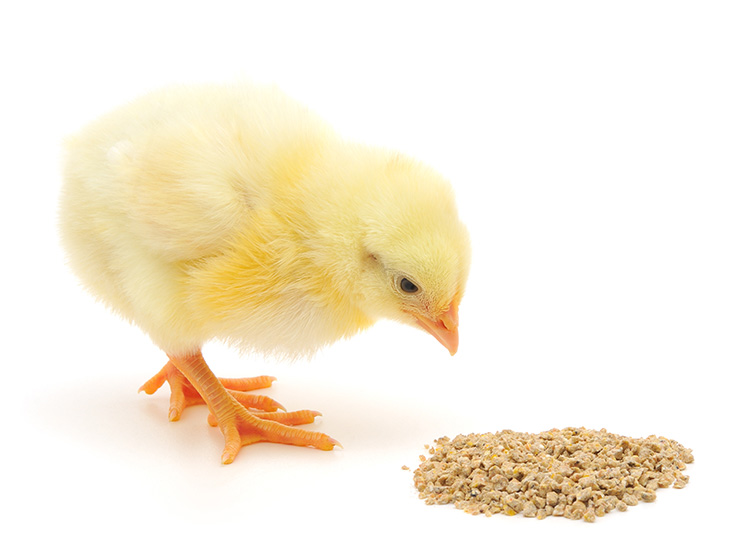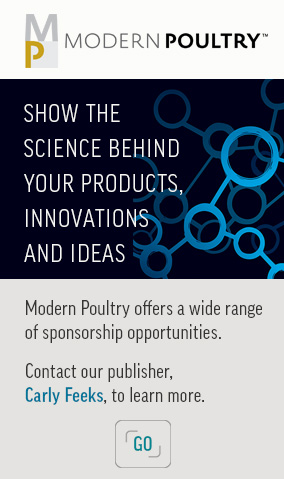Tightened-up feed-processing practices along with new hygienic feed options can help reduce salmonellosis outbreaks linked to poultry products, according to Tim Boltz, PhD, assistant professor of poultry nutrition and feed hygienics, Mississippi State University.
“Feed is a possible vector for introducing pathogens such as Salmonella to broilers during the grow-out period,” Boltz said. “Therefore, an increased focus on feed hygienics is on feed manufacturers to produce pasteurized feed while still meeting the nutritional requirements of the animal.”
Boltz has studied feed-manufacturing practices designed to help reduce Salmonella in feed mills. He discussed the processing practices and his research on feed hygienics during a presentation at the 2023 Poultry Science Association conference.
Prevent feed contamination
“Salmonella has an ability to survive in dry environments like feed mills for an extended period of time,” Boltz said. “It will contaminate other ingredients and finished feed if you aren’t controlling dust, excess moisture and fats/oils.”
Preventing contamination starts with following standard manufacturing practices for feed, he stressed. This includes training personnel on biosecurity measures to prevent the spread of pathogens within the mill and from outside flocks.
In the mill, Boltz advocates establishing clean and dirty zones. “Your clean zones are where your finished feeds are made, cooled and loaded out,” he said. “You don’t want to be going back and forth between the clean and dirty sides [with raw ingredients]. This is hygienic zoning.”
Each side should have separate tools to minimize cross-contamination. If employees must go between the two zones, biosecurity measures like a change in clothing and foot baths should be used.
Eliminate Salmonella havens
Dust, moisture and spilled fats or oils can become pockets of bacteria if not cleaned up. “It’s hard to control dust in a feed mill…but proper ventilation will go a long way in keeping it down,” Boltz explained.
Also helpful is dry cleaning with brooms and compressed air. These can be used to knock down dust on equipment.
He also suggested regulating moisture to prevent excess build-up in the cooler where Salmonella will over-colonize.
Feed mills need to be regularly cleaned, which can be difficult depending on the facility and equipment.
“You want to find something that works for your mill,” Boltz said. “And sometimes just having a dedicated time to clean will go a long way in increasing your overall hygiene in the mill.”
Boltz encourages feed mills to conduct a hazard analysis to pinpoint potential problem areas for issues like Salmonella and then set up preventive control measures to monitor and correct them.
Steam-conditioning research
Steam conditioning at high temperatures during pelleting has been shown to reduce pathogen loads in feed. However, no industry recommendations exist for the best temperature and length of time to reduce pathogens.
“We’re trying to work on finding what’s the best way to determine these,” Boltz said. “Everybody has to condition feed at a temperature for so long, based on the geographical location of the mill, diet formulation and production rates.”
Longer conditioning at a higher temperature reduces pathogen load in the feed but usually at the expense of important nutrients like amino acids and vitamins. To make up for the loss of nutrients, producers often over-formulate feed to meet birds’ needs, which can be expensive.
Other conditioning options used include conditioning feed through two or three conditioners before being pelleted or by adding antimicrobials to reduce bacteria and help prevent recontamination.
Hygienizer shows promise
A new piece of feed mill equipment called a hygienizer can be used to aid in producing more hygienic feed with a lower pathogen load than using only traditional conditioners.
“The steam is injected into the conditioner and mixed into the feed, adding some moisture to the feed before entering the hygienizer,” Boltz explained. “The heat from the hygienizer doesn’t add any moisture; it’s like an oven. The feed can be retained in the hygienizer for 45 seconds to 6 minutes.”
In a research project, Boltz tested an aggressive pelleting method using a hygienizer and compared it to standard pelleting. A surrogate organism, Enterococcus faecium (E. faecium) which mimics but doesn’t carry the same risk, was used in place of Salmonella.
The standard pelleting protocol was 15 seconds conditioning at 70° C (158° F). The aggressive conditioning time was 30 seconds at 80° C (176° F) and the jacket turned on for an additional 45 seconds.
Results showed a greater reduction in E. faecium with the aggressive conditioning — 4-log reduction compared to 3-log for standard pelleting. An increase in pellet quality was also noted.
Other research found a reduction in lysine when pelleted feed was conditioned at 88° C (190.4° F) for 60 seconds and an additional 6-minute retention in the hygienizer.
“You’re making more hygienic feed, which is good,” Boltz said. “But with the additional cost of supplemental lysine for these diets, nutritionists might not want to do that in their formulations.”
More work ahead
“Feed manufacturing is complex,” Boltz said. “There’s a lot that goes on so one set of rules will not work for everybody. I’ve been trying to work on some more widespread guidelines that everybody can use.
“These are good manufacturing practices, like doing your hazard analysis,” he continued. “If you have Salmonella in your mill, you need to focus on reducing it and keeping Salmonella from contaminating your finished feed.”




